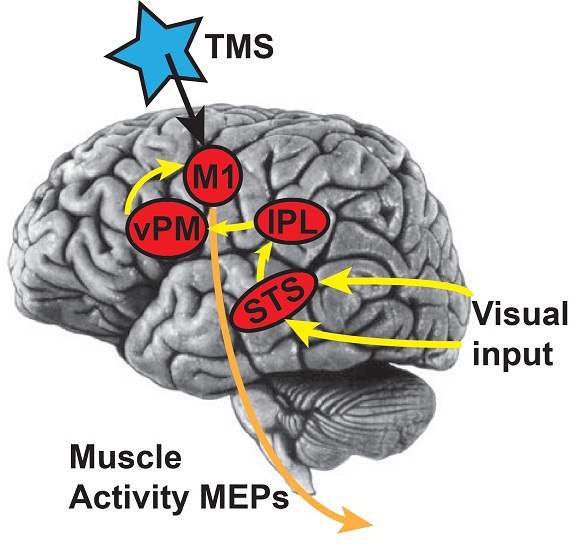Mirror Neuron System in action perception
The mirror neuron system consists of principally 2 regions of the cortex: ventral premotor cortex (vPM) and inferior parietal cortex (IPL), and seems to play an important role in action perception and action understanding. Cells within the mirror neuron system respond during the execution of goal directed actions as well as during observation of other agents performing goal directed actions. As such, the mirror neuron system appears to be mapping perceptual information about other agent's actions upon to motor circuits involved in the generation of those very actions. We are using a technique known as Transcranial Magnetic Stimulation (TMS) in order to investigate what role the mirror neurons system has, and does not have, in action perception.
The way we go about this is to deliver a very brief (~1ms) magnetic pulse to the primary motor cortex (M1) and measure the size of Motor Evoked Potentials (MEPs) generated in the muscles of the hand (as well as other body parts). At the same time as this pulse delivery, our participants are performing action perception tasks. Regions of their visual system are involved in action perception processing, for example the Superior Temporal Sulcus (STS). Visual information about the actions of other individuals is subsequently passed to the mirror neuron system and motor cortex.

When participants are viewing the hand actions of other individuals MEPs are greater than when viewing other non-hand actions (e.g. foot or face actions). This change in MEP magnitude represents the mapping of the specific visual information about hand actions onto motor circuits involved in hand action execution within the mirror neuron system. This eligant technique allows for us to measure the role of mirror neuron system activity during action perception tasks.